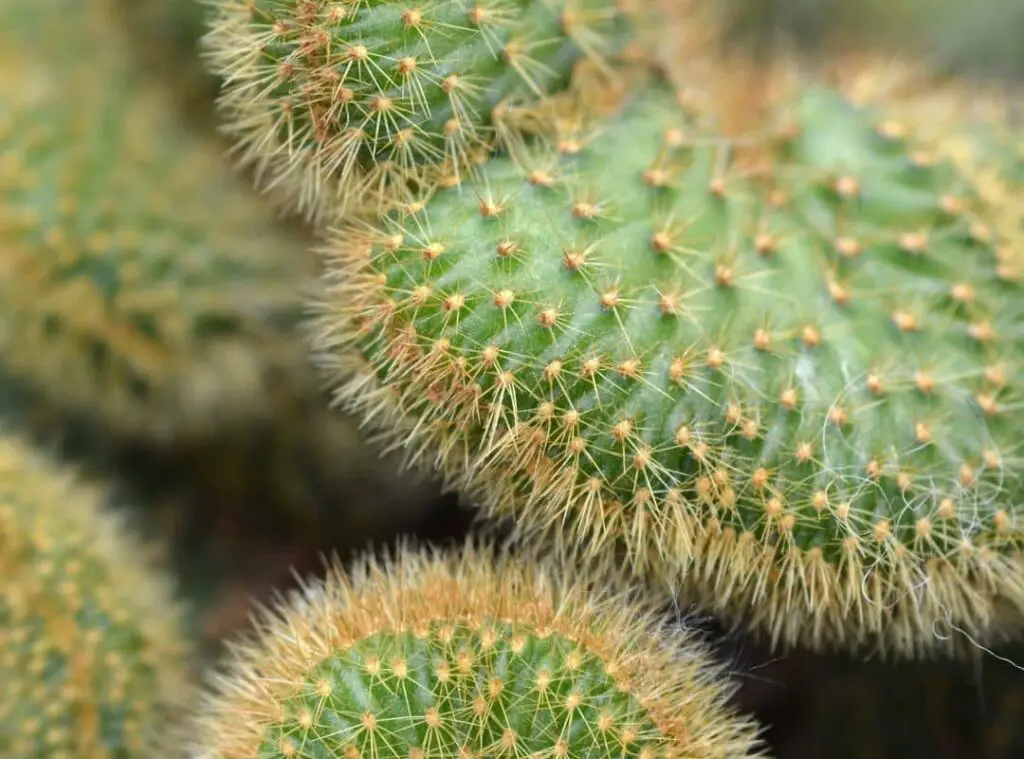Crested rat tail cactus is an endangered species in Mexico which is their native island, and they usually grow in the wild in Mexico.
So, here we are to learn on how we can properly care for them. It is important to know simply because it is becoming a trendy plant, and anybody would love to have one of these in their plant collection.
Hence, let’s learn about how we can provide the best care for them.

How to identify crested rat tail cactus
In terms of the appearance of the crested rat tail cactus, they have a distinctive look.
Their foliage is green when they are in the young stage. However, they would turn to beige as they mature.
They would contain long trailing stems which would be about 6 feet in height and half an inch in diameter.
The color of their stems would be reddish yellow and tiny. They would further consist of spines which could be trained into different forms as well as into different shapes.
Moreover, you could identify them with their blooms as they usually produce flowers in bright red to pink.
Chances are that they could produce blooms in pale pink or in orange. Those flowers would be two meters in width and three inches in length.
They would stay alive for only a few days and then shade off. Having said that there could be some plants where they do not bloom at all too.
Crested rat tail cactus stem would grow in a foot every year. They do not grow on soil when they are in their natural habitat. Instead of those, they would prefer to grow on surfaces like rocks, tree crotches, tree structures etc.
Crested rat tail cactus Care guide
Crested rat tail cactus is the same as other cactus and succulents since they also do not require a lot of attention, maintenance from you.
They would grow well, if you provide them the right soil mix and the proper growing conditions. Having said that, the following are the list of things which you need to do when caring for them.
Watering the plant
When it comes to watering the crested rat tail cactus, you need to water them moderately during their active growing season. When they mature, you could slowly minimize watering them.
On the other hand, when it is the fall, you need to cut back on watering . Moreover, when it is the winter season, you could skip watering them.
Only exception would be, when the soil is completely dry in winter. When you water them in winter, you only have to water them lightly so that it would be enough to keep the soil moist.
Soil Requirement
Crested rat tail cactus would prefer to have a rich potting medium. Best is to provide them with a well-draining soil mix which is specifically designed for cactus and for succulents.
Moreover, the most suitable soil mix would be a blend of four parts of loam along with one part of vermiculture and one part of sand.
The purpose of adding sand is to fasten the draining of the soil mix. In addition to that, you could line the pot with organic materials to make sure the perfect growth.
You could use organic materials such as sphagnum moss.
Pot size
Generally, crested rat tail cactus would thrive well in baskets, and in pots which are about 9 inches – 6 inches in size.
Consider that you have root bound plants, then the best is to provide them pots which are slightly bigger.
You could also reuse the pots after cleaning them or alternatively you could use new pots when repotting.
In case, your cactus is larger for the 6-9 inches container, best is to take cuttings and dispose of the mother plant.

Light condition
Crested rat tail cactus usually grows in desert conditions. As such they would prefer to grow in direct sunlight.
Therefore, I would recommend placing them somewhere where they get the full and bright sunlight. You could place it outdoors when the climate is sunny and warm.
In case, there is no adequate sunlight received for the crested rat tail cactus, you should consider providing them artificial light such as indoor LED plant lights. That will allow you to supplement light.
Amount of Fertilizer
In terms of feeding the crested rat tail cactus, you could apply fertilizers once every two weeks in their growing season.
When you apply fertilizers, make sure that you apply them at their stems. Further you may use a liquid fertilizer for this purpose.
Moreover, you may dilute it to a mild level and then use. Avoid using fertilizers during the winter season.
Temperature & Climate
The best temperature range would be 45° to 50° degrees Fahrenheit for them to grow well. Having said that they could thrive in temperatures up to 90’ degrees Fahrenheit also.
They would thrive in room temperatures during early autumn and in spring season.
During the winter season, crested rat tail cactus would go dormant, and you may shift it to somewhere in a cooler place so that it could rest.
Repotting
You may repot the crested rat tail cactus once a year. Ideally, right after blooming.
Usually, the nutrients would deplete in the potting medium at a faster rate, hence why you need to repot them once a year.
Outdoor or indoor plant?
They would perfectly fit in as indoor plants due to the easy maintenance they require. You could consider growing them in hanging baskets and in pots.
Common pests and diseases for rat tail cactus
Crested rat tail cactus could usually withstand pests, attacks and diseases. Having said that, bugs such as spider mites ,scale insects could invade these cacti and create issues.
Spider mites could attack the tissues of the rat tail cactus. They simply suck the sap from the leaves. You could identify them by their webbed nets.
Whenever you spot any spider mite attack, best is to isolate the plant and attend to it.
Alternatively, you could use a neem oil-based insecticide if they have attacked the plant on a severe level. On the other hand, If the infection is minor, you could simply wash them away.
When it comes to scales, they are larger in size when compared to spider mites and you could identify them easily too.
They are usually dome shaped. They simply stay enclosed to the surface of the rat tail cactus and invade the plant.
You could get rid of them by scraping them off or wiping them with a cotton swab dipped in alcohol.
Conclusion
Hope this article was useful for you and you could enhance your knowledge on providing proper care treatment for the crested rat tail cactus. Happy growing up !
Read Next : Rat Tail Cactus Problems | 5 Common and Irritating Problems |
Read Next : Rat Tail Cactus Flowers | 11 Beautiful Flower Facts |
